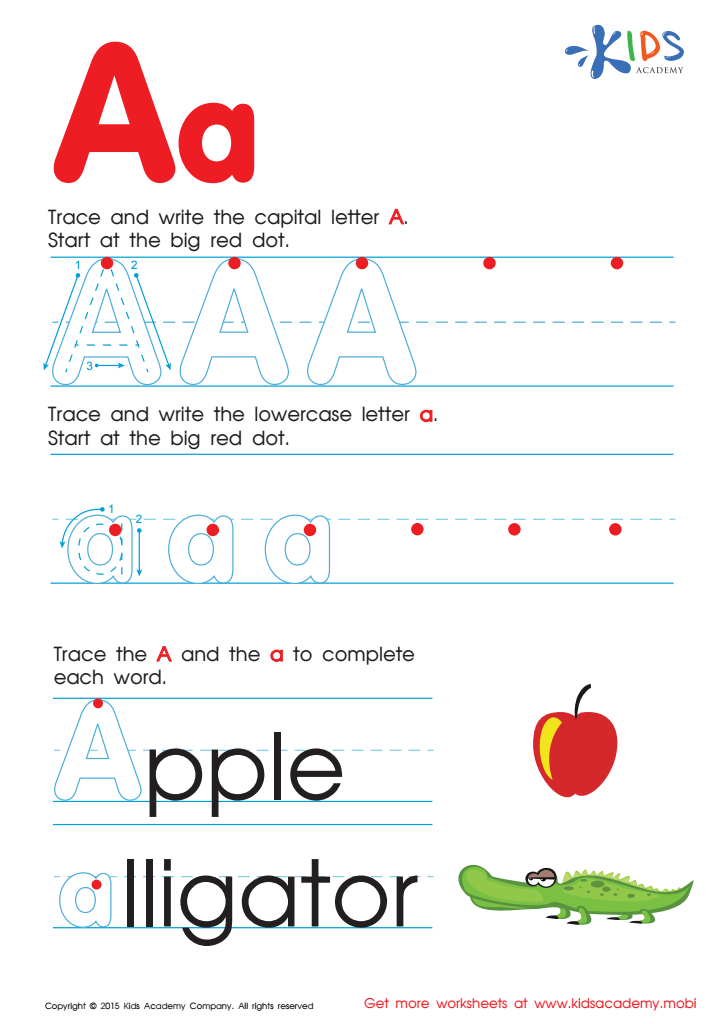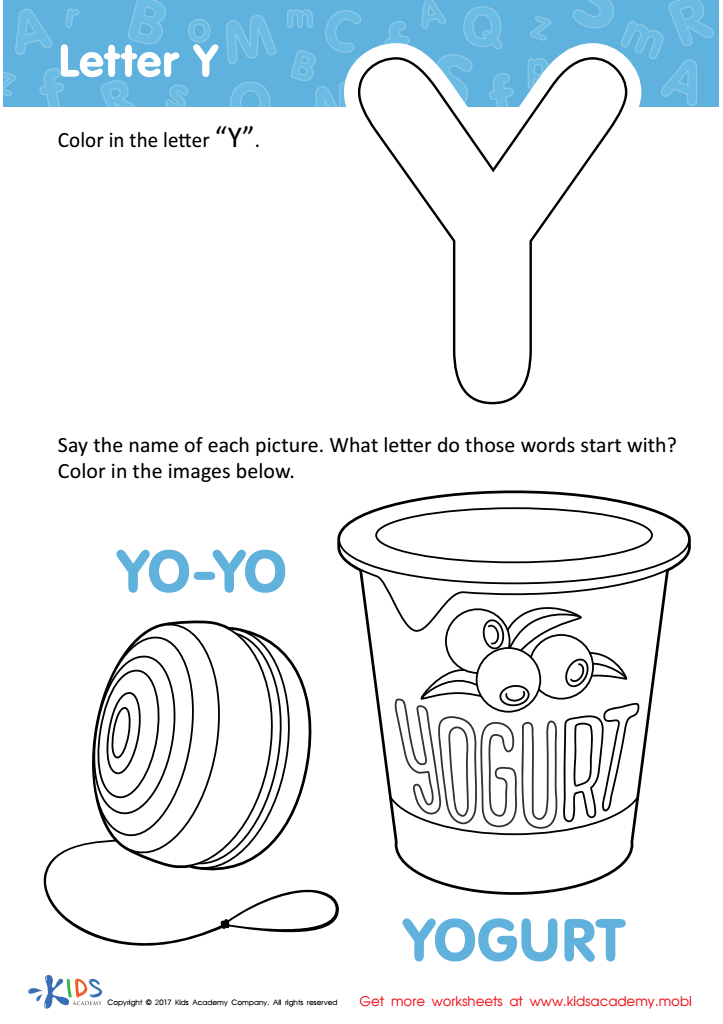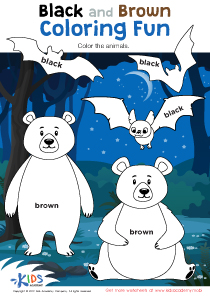Letter formation English for Beginners Worksheets for 4-Year-Olds
4 filtered results
-
From - To
Introduce your 4-year-old to the basics of English with our engaging "Letter Formation English for Beginners Worksheets." Created specifically for young learners, these worksheets combine fun and education, guiding children through the process of forming each letter. Ideal for non-native speakers and early learners, our worksheets offer visually appealing activities and step-by-step instructions to reinforce letter recognition and proper writing techniques. Boost your child's confidence and foster a love for learning as they master the foundation of English writing. Perfect for parents and educators, these worksheets make learning enjoyable and effective. Explore and download today!


Letter A Tracing Page


Letter P Tracing Page


Letter G Tracing Page


Letter Y Coloring Sheet
Parents and teachers should prioritize proper letter formation for 4-year-olds because it serves as the fundamental building block of literacy. At this formative age, children are developing fine motor skills which are crucial for writing. Ensuring that they learn to form letters correctly helps enhance their dexterity and hand-eye coordination. When children start school with a solid grasp of proper letter formation, they find it easier to learn to read, write, and spell. This foundation also builds confidence in their academic abilities, fostering a positive attitude towards learning.
Correct letter formation reduces the likelihood of bad writing habits that can be difficult to break later. It helps avoid confusion between similar-looking characters (like 'b' and 'd'), making the process of learning to read more efficient. Moreover, clear and legible handwriting aids teachers in assessing students' work accurately, which is essential for effective feedback and instruction.
Additionally, engaging in activities that promote letter formation can be fun and engaging for young learners, capturing their interest and making education a positive experience. These skills lay the groundwork for future academic success and help ensure that the child's first encounter with the educational system is enriching and supportive.
In essence, investing in proper letter formation at an early age builds an essential skill set that supports broader educational development and lifelong learning.

 Assign to My Students
Assign to My Students












